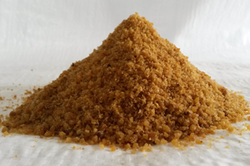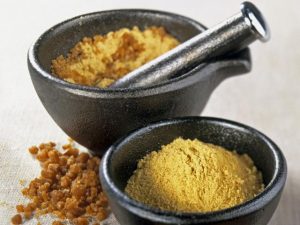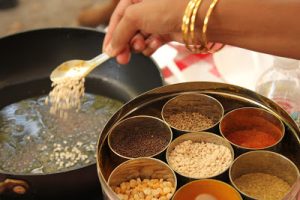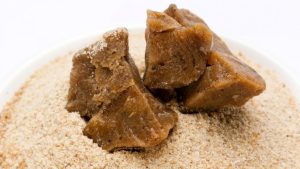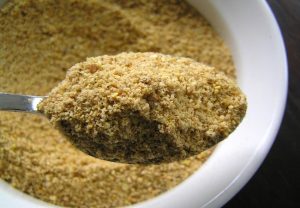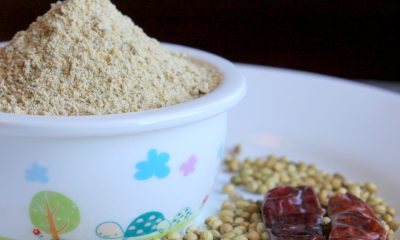Food Blogs
All you need is spice: Hung over hing
Asafoetida, a spice native to India is an extremely pungent, aromatic spice, also known as the ‘devil’s dung’ and the ‘food of gods’- there is a good reason for the controversy associated with it. It carries the smell and flavour of onions and garlic and can be overly pungent for the unsuspecting cook. In fact the word asafoetida has been coined by combining two words, ‘aza’ and ‘foetidus’, which mean ‘resin’ and ‘stinking’ respectively. However, sizzle it in hot oil and it smells mellow and sweet.
Origin
Asafoetida is mainly grown in the Mediterranean and Central Asia regions, particularly Afghanistan and Iran. The botanical name for asafoetida is ‘Ferula Asafoetida’ while it is also known by other names like Hing (Hindi), Ferule Asafoetida (French) and Hilteet (Arabic).
Types
There are several varieties of asafoetida, which come under different classification and are priced accordingly. There are two major varieties of asafoetida, namely Hing and Hingra. Hingra is said to be inferior to Hing, which is richer in odour and is the most fancied. Hing is further classified as ‘Irani Hing’ and ‘Pathani Hing’, according to their country of origin, the former being from Iran, and the latter from Afghanistan. Among them, again, there are several varieties. Of these, ‘Hadda’ is the most priced and the strongest. The two varieties of Irani asafoetida are ‘Sweet’ and ‘Bitter’ asafoetida. Horizontal cutting of the stem gives us sweet asafoetida. Its colour is brown, is transparent or turbid, and contains pieces of stems. Cutting of the plant root gives us bitter asafoetida. No pieces of wood exist in it. It is similar to amber coloured separated grains or dough of white and red colour. The two broadly recognised classes of asafoetida sold in the market with which most of the consumers may be familiar, are the white or pale variety and the dark or black variety. The former is water-soluble and the latter is oil soluble. Chemically both are reported to be the same. Asafoetida is an oleo gum- resin. Where the gum portion preponderates, as in Hing, it is water soluble, and where the resin portion preponderates, as in Hingra, it is oil soluble.
Culinary uses
Hing, asafoetida or ‘perukayam’ is equally loved by the meat lovers and vegetarians. Known for it’s antibacterial properties, it is used to tenderise and preserve meat. In the homes of Jains and Brahmins, where onions and garlics are prohibited, asafoetida runs to their rescue. Adding a three dimensional flavour to your dish is just a pinch of asafoetida away. Sprinkling this mysterious spice over food can add smoothness to the flavour. Asafoetida is best used as a background note for other complimentary spices, like cumin, mustard seeds, dried chiles, curry leaves, ginger and garlic. Add any combination of these things to drizzle over beans, stewed vegetables or anything at all. As a dish cooks, the asafoetida graciously recedes into the background, though while it lets other flavours develop, it never disappears. The end result is an intensely aromatic dish with layers of flavour and a full mouthfeel. A small pinch of asafoetida will go a long way and if you add too much, the dish will turn bitter and will have the strong smell of asafoetida that you will never be able to get rid off. Your key to using asafoetida: Less is more. A long list of obscure spices in an Indian recipe can be discouraging, but this one is definitely worth seeking out. This isn’t an A-list spice, but it’s one of the world’s best supporting stars. 1/4 tsp is enough for a curry feeding 4-6 people. This spice is very commonly used in pickles to achieve the strong flavour. Curries, spice blends, lentil dishes- one pinch of hing is used to play the major part.
Medical properties
Asafoetida more than just adds flavour to your food, it could be your solution to many health problems. The spice is the expert at treating flatulence and stomach disorders. Next time you find yourself in ear pain, heat coconut oil in a small pan with a small piece of asafoetida until it melts. Once it cools down, apply the oil inside the ear with clean hands. Adding a little asafoetida to buttermilk with sugar can help ease menstrual pain and reduce the discomfort. Though asafoetida is not advisable to be given to babies or toddlers internally, applying a paste to their tummies can help if they are suffering from gas. Applying a paste on the chest will cure cough in children in no time. Asafoetida is a good protection against triglycerides and cholesterol.
The other side to the coin
Besides it’s many uses, there are certain precautions that need to be taken. If you are pregnant, it is unsafe to take this spice as it may cause miscarriage. The chemicals of asafoetida also tend to pass to the breast milk and cause bleeding disorders in infants. It is not suggested for lactating mothers. Care needs to be taken if you are taking this spice along with blood pressure medication. It is also unsafe for those with gastrointestinal infection. Administering infants with asafoetida can be potentially life threatening because of the tendency of the spice to cause blood disorders.
What to look for when you are buying the spice
Asafoetida is available in the form of blocks and powder which maybe chose as per convenience. The blocks are reduced to small pieces or coarse powder before adding to any dish. The block form of asafoetida is preferred from a storage point of view. The powdered form is for instant usage. Because of it’s ability to stink up the whole kitchen, it is important to always ensure the spice is stored covered and in an air tight container. Asafoetida has a very strong shelf life, yet just like any other spice you buy, it is important to check for manufacture, expiry and packing date before purchase.
Checking for adulteration
Just like all food items, there is a chance asafoetida could contain adulteration too. It is sometimes mixed with wheat flour and gum of Kikar tree. You can test for adulteration by dropping it in a glass of water. If it sinks and settles at the bottoms, it is adulterated whereas unadulterated hing completely dissolves in water, making it milky and leaves no sediment.

